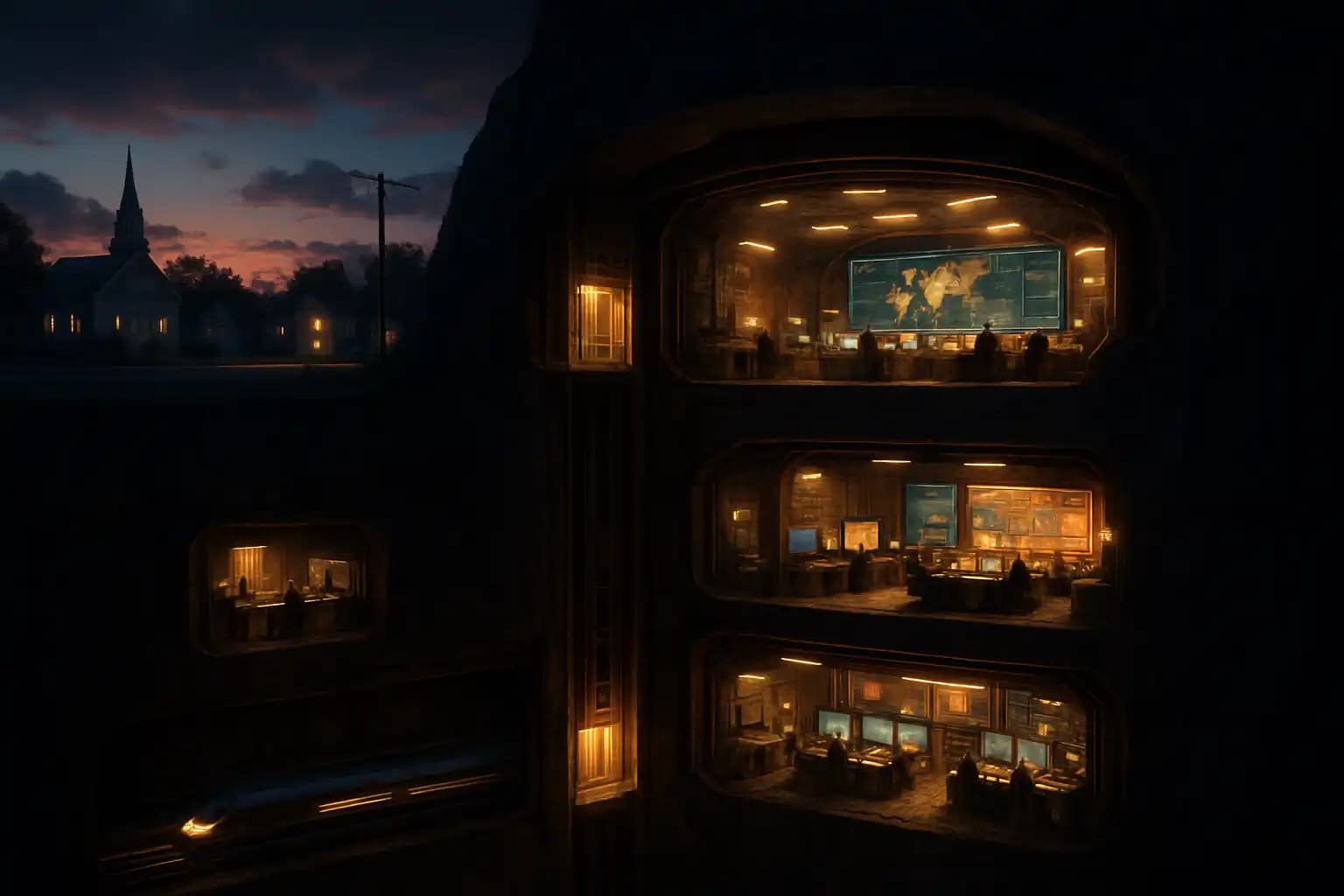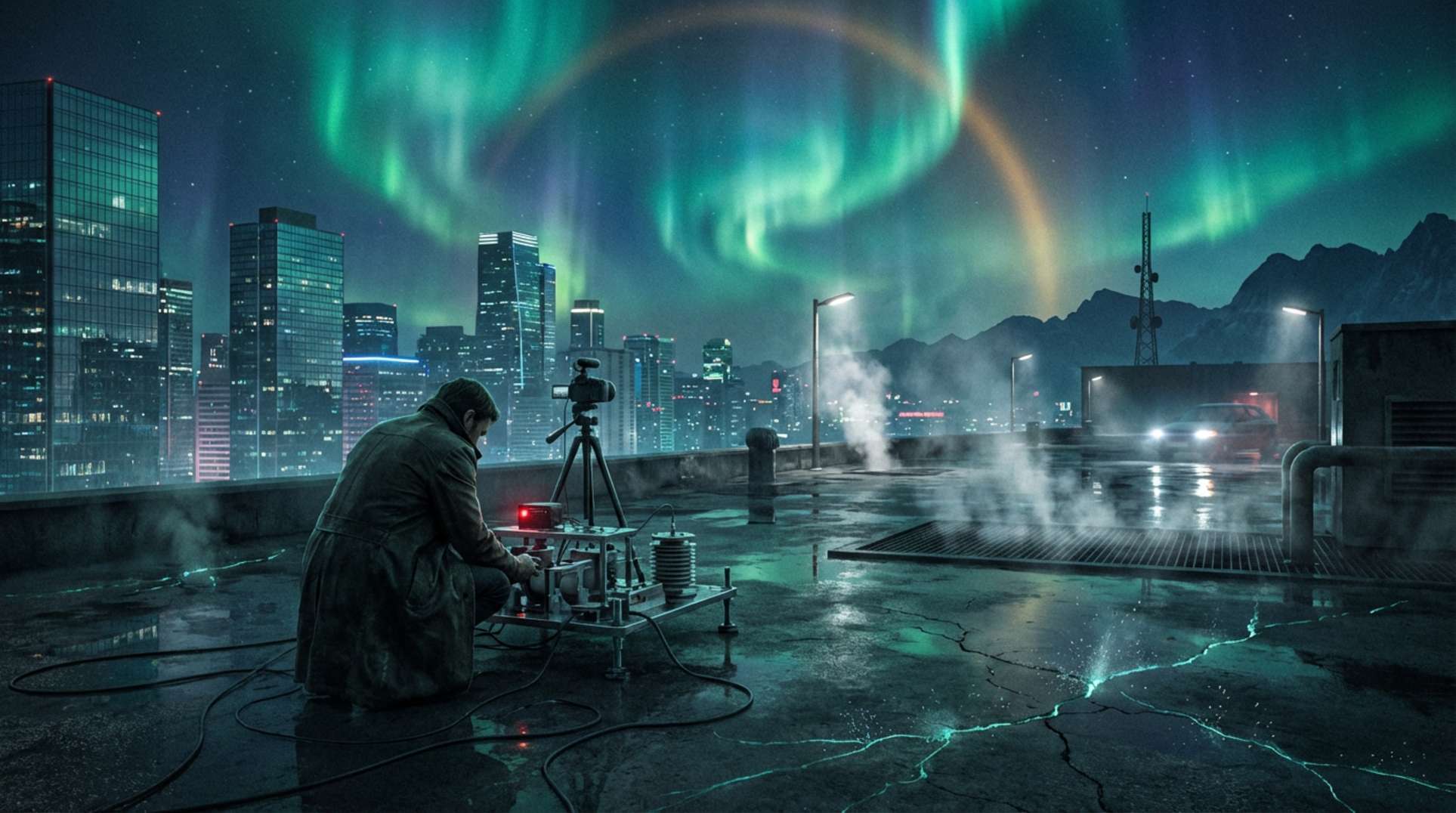At a quarry in rural West Virginia, truck convoys haul rebar and blast doors at night. Local officials wave them through, citing “critical infrastructure” exemptions. Two states away, a bored tunnel emerges behind razor wire in the Nevada desert. Its ventilation stacks match the sandy hills. Meanwhile, appropriations subcommittees tuck eight-figure sums into line items labeled deep hardening. To the untrained eye, these projects appear disconnected; to defense insiders, they form a subterranean lattice—America’s quiet revival of vast underground bases built to withstand whatever disaster headlines arise next.
The term DUMB—Deep Underground Military Base—originated in fringe pamphlets during the 1990s. Today even Popular Mechanics catalogs the actual ones. Fresh satellite images show renewed digging at sites once mothballed after détente. Combine those images with the spike in classified construction contracts, and you hear whispers of a government preparing for geomagnetic chaos, like that analyzed in this magnetosphere briefing, and AI-driven cyber wars discussed in a recent risk dossier. The sum raises a blunt question: what scenario justifies a multi-billion-dollar push to live and fight beneath our feet?
Cheyenne Mountain 2.0: Modernizing the NORAD Fortress
Every conspiracy theory about bunker America returns to Colorado’s Cheyenne Mountain. This granite vault protected North American Aerospace Defense Command during the Cold War. In April, NORAD confirmed a new round of seismic retrofits and fiber upgrades at the complex, documented in the top Brave result here. Contractors poured elastomeric pads under command-center floors—insurance against EMP jolts and kinetic shocks up to 30 megatons.
Officials frame the overhaul as routine life-extension, but the scope reveals a bigger tale: expanded data halls, redundant aquifers, and a medical wing akin to small hospitals. Those additions align with continuity-of-government doctrine outlined on Wikipedia’s COG page, where hardened nodes must sustain leadership for months without resupply. In other words, Cheyenne Mountain is no longer just a radar sanctuary; it is now a self-contained city ready to weather cyber blackouts, solar storms, or worse.
The timing coincides with intelligence forecasts of “compound threats”—coincident crises that impact power grids while drones prowl the skies, a motif echoed in this doomsday-clock analysis. Should that cascade unfold, commanders deep inside the mountain will flip national-alert switches when surface networks fail.
Mount Weather and the FEMA Nexus: Civilian Command Goes Subterranean
No bunker looms larger on the civilian side than the Mount Weather Emergency Operations Center, the FEMA-run complex 60 miles west of Washington. Originally carved during Eisenhower’s tenure, it is receiving its own classified facelift, revealed by USA Today and summarized in the top Brave hit here. Locals now observe fresh microwave relays and a new asphalt spur leading to an expanded entry portal.
Mount Weather’s charter is straightforward: keep civilian governance alive when the capital cannot. The facility holds a mirror database of federal payroll, secure legislative chambers, and enough dorm space for continuity staff. During 9/11, it reportedly hosted congressional leadership. The ongoing upgrades add greenhouses and modular reactor lines, suggesting planners expect crises measured not in days but seasons—echoing climate-shock models spotlighted in this biodiversity report.
A leaked procurement brief mentions “vertical mass-transit shafts compatible with next-gen tunneling vehicles.” In short: dig faster and deeper, possibly connecting to a wider mesh.
The Tunnel Network Hypothesis: Boring Toward Strategic Redundancy
Federal filings show the Army Corps ordering high-power Tunnel Boring Machines (TBMs) from German manufacturer Herrenknecht—units similar to those drilling metro lines but rated for harder strata. One delivery route ends near a Utah training range long linked to drone testing, the same airspace scrutinized in this orbital mystery feature. Security analysts envision a future where under-rock corridors transport autonomous weapon stacks, shielding them from satellite reconnaissance and hypersonic missiles.
Blueprint leaks are scarce, yet geologists have mapped anomalous heat plumes under parts of Nevada and Idaho—thermal signatures consistent with active tunneling. The top Brave result on DUMBs, this primer, lists legacy sites like Raven Rock and Site R; sensor data suggests new ones now punctuate the map at 300-mile intervals, ideal for maglev pods carrying materiel coast to coast in under four hours.
Such mobility would allow the Pentagon to reposition command crews even if surface transport fails—imagine the cascading power failures posed in extreme-weather scenarios.
Strategic Rationale: From EMP Fears to Multi-Domain Warfare
Why the surge now? Consider layered threats. Solar physicists warn the current cycle could unleash a Carrington-class coronal mass ejection at our cables. Cyber command fears AI-generated malware crippling SCADA grids. Defense planners evaluate hypersonic salvos against orbital satellites, a theme discussed in this space-war forecast. In each case, the vulnerability lies in surface infrastructure.
Underground complexes mitigate that vulnerability by securing leadership, data, and drones within 2,000 feet of rock. They host isolated microgrids, artesian wells, and quantum-key distribution backbones. An EMP that silences cities from Boston to Austin would leave the bunker net humming. In Pentagon jargon, it’s assured command and control. In simpler terms, it’s the ability to keep issuing orders when everything above collapses.
This strategy mirrors ecological fallback plans—seed vaults in Svalbard, DNA archives in Antarctica—except here, the seed is governance. Sociologist Kara Lim observes, “We’re watching the state build a biological immune system in concrete.” Her research connects austerity budgets to bunker booms, echoing political-economy alarms noted in this cultural exposé.
Critics, Costs, and the Ethics of Unequal Shelter
That granite shielding carries a taxpayer cost. Congressional watchdogs estimate total subterranean spending exceeds $25 billion since 2020, figures concealed in dispersed appropriations. Detractors argue the funds would better serve to harden civilian grids or wildfire defenses. “You can’t hide 330 million people underground,” quips Rep. Elena Sandoval, citing the equity gap highlighted in this social-stratification feature.
Ethicists warn that continuity systems prioritize elites. Historical precedents exist in Cold War documents where ticket lists included only key legislators and top brass. Modern playbooks claim broader representation, but details remain classified. Transparency advocates demand an audit—who really gets a badge when the sirens sound?
Defense officials argue that hardened hubs protect emergency response coordination, benefiting everyone topside. Many DUMBs also serve as data recovery centers preserving medical records and financial ledgers. Cutting them, they say, would be like cancelling fire insurance because your neighbor lacks a sprinkler.
What Comes Next: From Myth to Policy Reality
For decades, the idea of secret bases morphed into urban legend, fueled by tales of subterranean reptiles—stories explored in this desert-myth investigation. The current construction boom drags the narrative from late-night radio into congressional ledger books. Whether creating bunkers improves safety or merely signals fear, one fact is now clear: the earth beneath our highways buzzes with drilling, wiring, and pressurization tests.
Citizens may never tour these catacombs, but their taxes and futures already travel the tunnels. Accountability, therefore, becomes a civic duty. Data repositories such as Unexplained.co archive environmental reports and procurement notices, offering journalists breadcrumbs even when officials stay silent. In a democracy, that transparency may be the only scaffold stronger than limestone.
The next time a convoy rumbles past with oversized loads after midnight, glance at the roadcut and imagine a hidden door opening in the rock face. Behind it, engineers test airlocks, while policymakers rehearse for the day they dread—the day life above pauses and governance continues underground.




